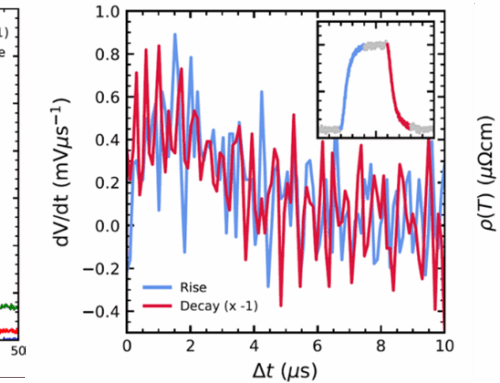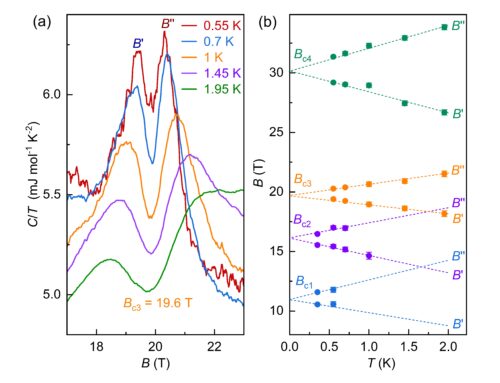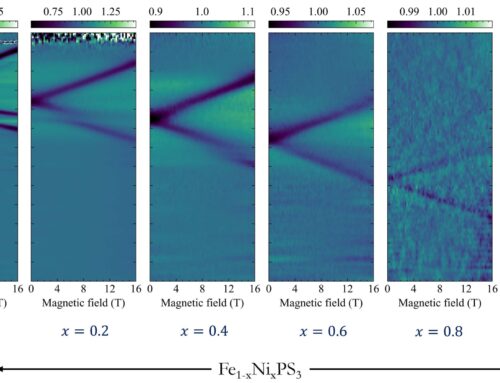Toni Helm, HLD.
Superhydrides are metallic hydride compounds that exhibit superconductivity (SC) under mega-bar pressure at extraordinarily high temperatures. The observation of superconducting critical temperatures, Tc, as high as 250 K has revived scientists’ dream of room-temperature superconductivity. While current research has focused on pushing Tc even higher, room-temperature applications based on hydride SC are limited by the small sample space and extreme condition inside the required diamond-anvil pressure cells (figure).
The basic mechanism behind the superconductivity in super hydrides is believed to be conventional in nature, i.e., Cooper pairs may form with the help of phonons, according to the Bardeen-Cooper-Schrieffer (BCS) theory. Nevertheless, among the ever-growing family members of superhydrides (to date, more than 20 compounds are known) also rather unusual behavior is observed that contradicts conventional theories.
An international team of researchers has looked into the rather unusual normal-state properties of the superhydride La4H23 with the help of pulsed magnetic field up to 70 T. The study reports experimental evidence for an unusual metallic state in a newly synthesized hydride, cubic A15-type La4H23, with a Tc reaching 105 K at 118 GPa. Below 40 K, the researchers observed a large negative magnetoresistance in the non-superconducting state, i.e., above the critical magnetic field Hc2, detectable for a particular region in the magnetic phase diagram presented in the figure. The work reveals anomalous electronic properties of A15-type La4H23 under high magnetic fields that hint at unconventional transport in the normal state, reminiscent of what was found in the strange-metal state of unconventional superconductors, such as the famous cuprate high-Tc superconductors. Similar unusual behavior has been reported for Ce-based superhydride compounds before. The results demonstrate the diversity of superhydrides apparently hosting physics that stretches beyond normal metallic behavior.

Figure: (a) Magnetic-field dependence of the electrical resistance of La4H23 at 121 GPa. Inset: DAC used for the pulsed-field experiments. (b) Magnetic phase diagram of La4H23 at 121 GPa.
Unusual metallic state in superconducting A15-type La4H23, J. Guo, D. Semenok, G. Shutov, D. Zhou, S. Chen, Y. Wang, K. Zhang, X. Wu, S. Luther, T. Helm, X. Huang, and T. Cui, Nat. Sci. Rev. 11, nwae149 (2024).
https://academic.oup.com/nsr/article/11/12/nwae149/7651283
Contact: T.Helm@hzdr.de






